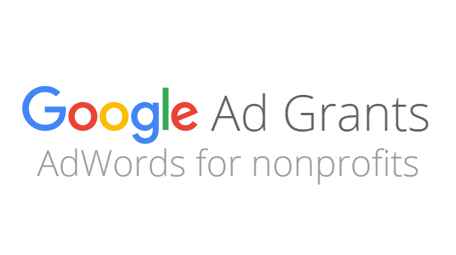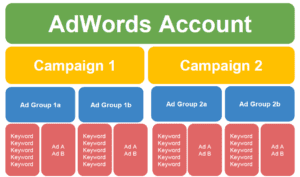2018 Google Ad Grants Updates
Google Ad Grants Policy Changes
 Google Ad Grants is a program that awards $10,000 of online advertising every month to qualifying nonprofits to use on Google’s advertising platform, AdWords. Recently, Google made several policy changes that will affect how these nonprofits run their accounts. Below is an overview of changes Google is now enforcing in its nonprofit program.
Google Ad Grants is a program that awards $10,000 of online advertising every month to qualifying nonprofits to use on Google’s advertising platform, AdWords. Recently, Google made several policy changes that will affect how these nonprofits run their accounts. Below is an overview of changes Google is now enforcing in its nonprofit program.
Bidding
 Previously, Google capped the maximum bidding at $2.00 for keywords. As part of the new update, Google AdWords has removed the $2.00 bidding cap on keywords for nonprofits who use Maximize Conversions Bidding. Through Maximize Conversions Bidding, Google automatically optimizes bidding to help get the most conversions for campaigns. This update will allow nonprofits to bid on keywords previously out of reach to them.
Previously, Google capped the maximum bidding at $2.00 for keywords. As part of the new update, Google AdWords has removed the $2.00 bidding cap on keywords for nonprofits who use Maximize Conversions Bidding. Through Maximize Conversions Bidding, Google automatically optimizes bidding to help get the most conversions for campaigns. This update will allow nonprofits to bid on keywords previously out of reach to them.
Click-Through Rate (CTR)
One change that could cause nonprofits currently using Ad Grants to be ineligible for the program in the future is the updated policy on click-through rates. There are now performance restrictions that affect a nonprofit’s ability to continue with the Ad Grants program. The account CTR needs to consistently exceed 5%. If your account currently has a CTR lower than 5%, the first step is to remove ads, keywords, and ad groups that aren’t important to the company. Next, adjust keywords, ads, and ad groups to improve the CTR. Analyzing search terms, adding negative keywords, and removing broad keywords are easy ways to help optimize your account to increase CTRs. Remember, you want to decrease impressions while increasing clicks.
Keywords
Quality Scores
![]() Another update related to account performance is the requirement for keywords to have a quality score of three or greater. There are different ways to increase the quality score of a keyword. The first step is to mouse over the “Status” column in the Keywords section of AdWords. This column provides insight into why your quality score is low. A low score could be the result of a below average expected click-through rate, landing page experience, or ad relevance, or a combination of the three. Adjust accordingly to improve your quality score. This could mean re-organizing and adjusting keywords, making sure ads tie directly to the keywords in the ad group, or making sure the landing page is specific to the keyword. Using the right keywords helps to attract the right customers, which in turn increases both the CTRs and Quality Scores.
Another update related to account performance is the requirement for keywords to have a quality score of three or greater. There are different ways to increase the quality score of a keyword. The first step is to mouse over the “Status” column in the Keywords section of AdWords. This column provides insight into why your quality score is low. A low score could be the result of a below average expected click-through rate, landing page experience, or ad relevance, or a combination of the three. Adjust accordingly to improve your quality score. This could mean re-organizing and adjusting keywords, making sure ads tie directly to the keywords in the ad group, or making sure the landing page is specific to the keyword. Using the right keywords helps to attract the right customers, which in turn increases both the CTRs and Quality Scores.
Single-Word Keywords
Google’s new policy adds restrictions to keywords. Keywords need to be more than a single word, unless that word is your brand name. Google will also restrict the use of overly generic keywords. It is important to note that some keywords are excluded from the keyword restriction. Because of these new restrictions, nonprofits need to choose better targeted keywords when setting up their campaigns. You need to make sure the keywords you choose accurately reflect your nonprofit’s mission in order for them to be approved. Use AdWords’ Keyword Planner to do keyword research, and don’t be afraid to use phrases for keywords.
Account Structure
Two Ad Groups & Ads

With the new update, there are now minimum requirements for an account. These include having at least two ad groups per campaign and two ads within each ad group. Each ad group should have some theme that distinguishes it from other ad groups. For example, an animal shelter can have have different ad groups for volunteering, adopting, fostering, and donating. Under each ad group, there should be keywords specific to the ad group. The ads within an ad group should reflect those keywords and have a corresponding landing page. By increasing the number of ad groups and ads, the ads Google shows can be more targeted to the search.
Sitelinks
Ad Extensions are a way to reach consumers at different levels by providing more information in your ads. Sitelinks are a form of ad extensions that connect customers to specific pages on your website. With the new update, Google requires accounts to have at least two sitelinks. We suggest you not only include two sitelinks, but add other ad extensions as well. Some popular ad extensions are Callout, Location, and Price Extensions. Adding ad extensions will increase your ad’s visibility and performance.
Targeted Locations
![]() On top of the structural updates, campaigns now need to use targeted locations. Instead of setting the location as the United States, nonprofits need to narrow their scope. This usually means targeting the city or cities where your nonprofit is physically located or offers services. For example, a New Orleans animal rescue center won’t need its ads showing in Los Angeles. By narrowing down the location, your ads only show to people in the cities that are relevant to your organization.
On top of the structural updates, campaigns now need to use targeted locations. Instead of setting the location as the United States, nonprofits need to narrow their scope. This usually means targeting the city or cities where your nonprofit is physically located or offers services. For example, a New Orleans animal rescue center won’t need its ads showing in Los Angeles. By narrowing down the location, your ads only show to people in the cities that are relevant to your organization.
Setting up your nonprofit’s account can get confusing. Get an overview of how your AdWords campaign should look with Google’s Ad Creation Guide. If your nonprofit is still unsure about how to best adjust for the new Ad Grants upgrades, Online Optimism is here to help.
Our team of Certified Google AdWords professionals will help you get the most value out of your Ad Grants each month. Contact us today!
